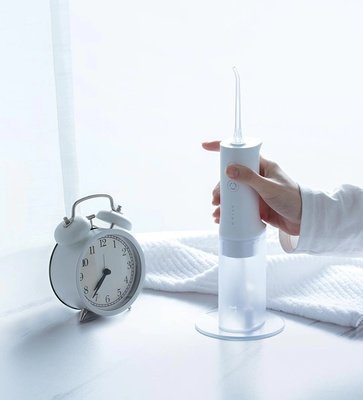
Enhance the Performance of Oral Irrigator Motors
1. Boost Motor Efficiency: The use of oral irrigators is typically brief, making motor energy efficiency paramount. By refining motor design and materials, efficiency can be markedly enhanced. For instance, employing copper wire with superior conductivity and iron cores with high magnetic permeability can minimize energy dissipation. Additionally, refining the motor's winding pattern and utilizing a more efficient current waveform can further boost motor performance.
2. Minimize Noise: Noise is a critical aspect of the user experience with oral irrigators. To mitigate this, consider the following strategies:
- Acoustic Insulation: Incorporate soundproofing materials within the motor casing and toothbrush structure to dampen vibration and noise transmission.
- Motor Speed Optimization: Tweak the motor's operating speed to reduce noise by running at lower velocities.
- Silent Motor Integration: Opt for a low-noise motor design or integrate shock absorbers to further diminish noise levels.
3. Upgrade Waterproofing: Water ingress during oral irrigator use can compromise motor integrity. Enhancing motor waterproofing is essential and can be achieved by:
- Sealing Techniques: Utilize premium sealing materials at motor junctions to prevent water seepage.
- Waterproof Coating: Apply a protective coating to the motor surface to bolster its resistance to water.
- Drainage Channel Design: Integrate a drainage channel in the irrigator design to prevent water accumulation near the motor.
4. Strengthen Durability: Given the diverse usage scenarios of oral irrigators, the motor must exhibit robust durability. Consider the following:
- Material Quality: Select materials that are resistant to corrosion and high temperatures to ensure the motor's longevity.
- Vibration Resistance: Install anti-vibration components at the motor's mounting point to reduce wear from vibrations.
- Rigorous Testing: Conduct thorough durability tests during product development to ensure reliable performance under various conditions.
5. Implement Intelligent Controls: As smart home technology proliferates, the demand for smart oral irrigators grows. An intelligent control system can deliver a tailored user experience, such as:
- Adaptive Modes: Automatically adjust water pressure and pulsation based on individual oral health needs.
- Mobile App Connectivity: Sync with mobile apps via Bluetooth or Wi-Fi to track usage patterns and offer personalized advice.
- Scheduling Alerts: Incorporate reminders to encourage consistent oral hygiene practices.
6. Manage Costs: While maintaining performance and quality, cost control is a key objective. This can be addressed by:
- Streamlining Manufacturing: Enhance production processes, eliminate superfluous steps, and increase efficiency.
- Economies of Scale: Achieve lower per-unit costs and stronger market presence through mass production.
- Strategic Sourcing: Forge partnerships with reliable suppliers for steady material supply and cost benefits.
In summary, the coreless motor in oral irrigators offers significant potential for improvement across user experience, product performance, and cost reduction. By focusing on design optimization, efficiency, noise reduction, waterproofing, intelligent controls, and cost management, oral irrigators can gain a competitive edge and satisfy escalating consumer demands.
Post time: Nov-15-2024

